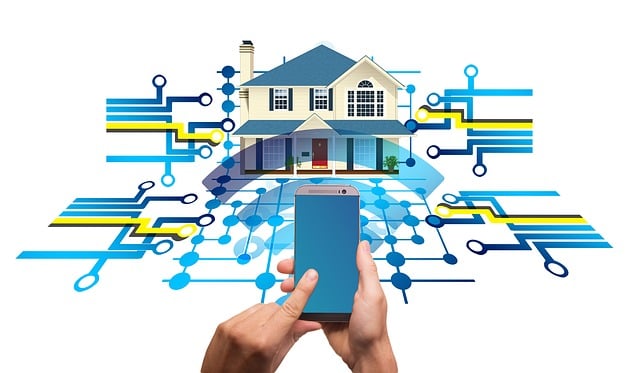Table of Contents
Benefits of Remote Home Monitoring
Whether you’re away for a weekend getaway or simply at work during the day, the benefits of remote home monitoring are invaluable. Being able to keep an eye on your home from afar gives you peace of mind and eliminates the worry of not knowing what’s happening in your absence. With real-time alerts and notifications, you can stay informed about any unusual activity or emergencies, allowing you to take immediate action if necessary.
The convenience of being able to control various aspects of your home remotely, such as adjusting thermostats, turning lights on and off, or locking doors, offers a sense of control and security. Additionally, remote home monitoring can help you save on energy costs by allowing you to manage your home’s heating, cooling, and lighting efficiently. These benefits not only enhance the overall safety and security of your home but also make daily life easier and more streamlined.
How Remote Home Monitoring Works
Remote home monitoring operates by using a network of sensors strategically placed inside the home. These sensors can detect various environmental changes and relay this data to a central hub or a smartphone app. Through this system, homeowners can receive real-time alerts about any unusual activities, such as unexpected movements, changes in temperature or humidity, or the presence of smoke or carbon monoxide. The sensors utilize wireless technology to communicate with the central hub, ensuring seamless monitoring without the hassle of extensive wiring.
Additionally, remote home monitoring systems often incorporate cameras that provide live video feeds of the interior and exterior of the property. These cameras can be accessed remotely through an app or website, allowing homeowners to check in on their home at any time. Some advanced systems even offer features like two-way audio communication, enabling users to interact with individuals in their home while they are away. By leveraging this technology, remote home monitoring systems offer a comprehensive and convenient solution for enhancing home security and peace of mind.
Types of Sensors Used in Remote Home Monitoring
Remote home monitoring systems utilize a variety of sensors to help keep your home safe and secure. One common type of sensor is the motion sensor, which detects movement within a specific area and alerts the homeowner or monitoring service. These sensors are often placed near entry points or in rooms where valuable items are stored to detect any unauthorized activity. Additionally, door and window sensors are frequently used to monitor if any doors or windows are opened or closed, providing another layer of security to the home.
Temperature and humidity sensors are also integral components of remote home monitoring systems, allowing homeowners to monitor and adjust the climate within their homes from a distance. These sensors can help prevent potential issues such as frozen pipes or mold growth by alerting homeowners to any drastic changes in temperature or humidity levels. By incorporating these various sensors into their remote monitoring devices, homeowners can have greater peace of mind knowing that their homes are being monitored and protected around the clock.
Features to Look for in Remote Home Monitoring Devices
When considering remote home monitoring devices, it is essential to prioritize features that enhance the security and convenience of your home. Look for devices that offer seamless integration with your existing smart home systems, allowing for centralized control and monitoring. Additionally, opt for devices equipped with advanced sensors that can detect a wide range of environmental changes, such as motion, temperature, and humidity.
Another important feature to look for in remote home monitoring devices is the ability to receive real-time alerts and notifications directly to your smartphone or other smart devices. This feature ensures that you are always informed of any potential security breaches or emergencies, allowing for prompt action to be taken. Furthermore, choose devices that offer cloud storage for recorded footage, enabling easy access to past events for review and analysis.
Benefits of Installing Remote Home Monitoring Devices
Having remote home monitoring devices installed can greatly enhance the security and safety of your home. By providing real-time alerts and notifications, these devices enable you to monitor your residence from anywhere in the world. This added layer of protection offers peace of mind, knowing that you can keep an eye on your property and loved ones at all times.
Furthermore, remote home monitoring devices can help you detect and respond to potential emergencies promptly. Whether it’s a break-in, a fire, or a water leak, these devices can alert you instantaneously, allowing you to take swift action to mitigate any damages. This proactive approach can make a significant difference in protecting your home and belongings, potentially saving you from costly repairs and losses.
Top Brands in Remote Home Monitoring
When it comes to remote home monitoring, there are several top brands that stand out for their innovation and reliability. One such brand is Nest, known for its user-friendly interfaces and seamless integration with other smart home devices. With Nest, homeowners can monitor their property from anywhere in the world, thanks to its advanced features and cloud-based storage capabilities.
Another top brand in the remote home monitoring industry is Ring. Ring offers a range of cameras and sensors that provide real-time alerts and high-quality video feeds. Their devices are easy to install and can be customized to suit individual home security needs. With Ring, homeowners can have peace of mind knowing that their property is being monitored 24/7, whether they are at home or away.
How Remote Home Monitoring Enhances Home Security
Remote home monitoring systems play a crucial role in enhancing home security by providing real-time alerts and notifications to homeowners. These systems utilize a combination of sensors, cameras, and smart technology to detect any unauthorized entry or suspicious activities in and around the house. Through the use of motion sensors, door/window sensors, and video cameras, remote home monitoring systems can detect unusual movements or breaches in the home perimeter, allowing homeowners to take immediate action to safeguard their property.
Moreover, remote home monitoring systems enable homeowners to remotely access live feeds from their cameras and control their security devices through a mobile app or web portal. This level of connectivity empowers homeowners to monitor their property from anywhere in the world, giving them peace of mind and the ability to respond promptly to any security threats. In addition, many remote home monitoring systems offer integration with other smart home devices, allowing for a comprehensive approach to home security and creating a seamless ecosystem that enhances the overall safety of the household.
Cost Considerations for Remote Home Monitoring Systems
When considering the cost of remote home monitoring systems, it is essential to weigh the initial investment against the long-term benefits. Some systems may have a higher upfront cost but offer advanced features and technology that could prove to be more cost-effective in the long run. Additionally, factor in any monthly subscription fees for monitoring services, as well as maintenance costs for upkeep and potential upgrades. It’s crucial to strike a balance between affordability and functionality to ensure that the chosen system meets your needs within your budget.
Another cost consideration is the scalability of the remote home monitoring system. As your needs evolve or if you decide to expand the coverage of your system, you should assess whether the system can easily accommodate these changes without significant additional costs. Some systems may require specialized equipment or additional sensors to expand coverage, which could impact the overall cost. Understanding the potential cost implications of scaling up your remote home monitoring system can help you make informed decisions and plan for future upgrades effectively.
Installation Process for Remote Home Monitoring Devices
During the installation of remote home monitoring devices, ensure a central location for the control panel to guarantee optimal signal reception from all sensors. Placing sensors strategically around entry points such as doors and windows will help enhance the security coverage of your home. After installing the devices, connect them to your home’s Wi-Fi network using the provided instructions to enable remote access and monitoring capabilities.
Once the sensors are in place, test the system thoroughly to ensure all components are functioning correctly. This involves triggering each sensor individually to confirm that they are communicating with the control panel effectively. Additionally, familiarize yourself with the mobile app or online platform associated with the remote monitoring system to understand how to receive alerts and notifications in case of any security breaches.
Integration of Remote Home Monitoring with Smart Home Systems
With the evolution of technology, the integration of remote home monitoring with smart home systems has become seamless and efficient. By connecting remote monitoring devices to smart home systems, homeowners can access real-time alerts and data regarding their property’s security and safety. This integration allows for a centralized control hub that enables users to manage all aspects of their smart home and monitoring devices from a single interface.
Furthermore, the integration of remote home monitoring with smart home systems enhances the overall functionality and convenience of home automation. Users can create custom automation routines that are triggered based on the data collected by the monitoring devices, such as adjusting the thermostat when no motion is detected for a certain period. This level of integration not only provides a more streamlined and efficient home security system but also contributes to a more intelligent and interconnected living environment.
Remote Home Monitoring for Elderly Care
When considering remote home monitoring for elderly care, the safety and well-being of older individuals can be significantly enhanced. With the use of various sensors and devices, caregivers can remotely monitor the daily activities and health status of their loved ones. This technology allows for real-time alerts and notifications in case of emergencies, ensuring that help can be provided promptly.
By implementing remote home monitoring systems tailored for elderly care, families can have peace of mind knowing that their senior family members are being looked after even when they are not physically present. The ability to track movement patterns, monitor vital signs, and detect any unusual activity enables proactive care management and early intervention, ultimately promoting a safer and more secure living environment for the elderly.
Remote Home Monitoring for Pet Owners
Keeping an eye on our furry friends even when we’re not home can bring peace of mind to pet owners. Whether it’s checking in on a mischievous cat or ensuring a dog doesn’t get into any trouble, remote home monitoring systems offer a convenient solution. With live video feeds and motion sensors, pet owners can easily monitor their pets’ activities and well-being from anywhere, at any time.
Moreover, some advanced remote home monitoring devices even allow for two-way communication, enabling pet owners to talk to their pets and soothe them if they’re feeling anxious or lonely. These features can help alleviate any concerns pet owners may have about leaving their beloved companions home alone. By incorporating remote home monitoring systems into their households, pet owners can stay connected to their pets and ensure their safety and comfort even when they’re away.
• Remote home monitoring systems offer live video feeds and motion sensors
• Allows pet owners to monitor their pets’ activities and well-being from anywhere
• Some devices enable two-way communication for pet owners to talk to their pets
• Helps alleviate concerns about leaving pets home alone
• Ensures safety and comfort of pets even when owners are away
Comparison of Remote Home Monitoring Devices
When considering different remote home monitoring devices, it is important to weigh the features they offer. Some devices come with motion sensors, while others include video cameras for a more comprehensive view of your home. The level of customization and integration with other smart home systems also varies across brands, with some offering seamless connectivity and others requiring additional setup.
Another aspect to compare is the ease of installation and user-friendliness of the devices. Some brands provide step-by-step guides and intuitive interfaces, making it simple for users to set up and navigate the system. On the other hand, some devices may have a steeper learning curve and require more technical knowledge to operate effectively. Understanding these differences can help you choose the remote home monitoring device that best suits your needs and lifestyle.


